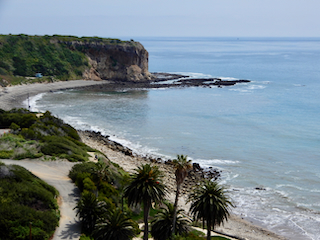
-
| 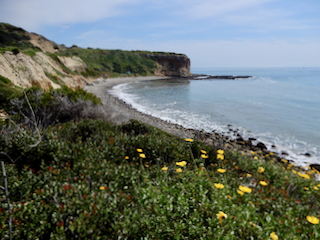
-
| 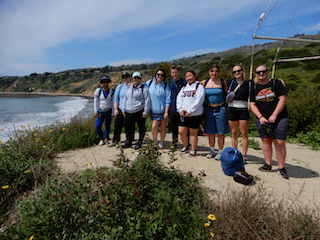
-
|
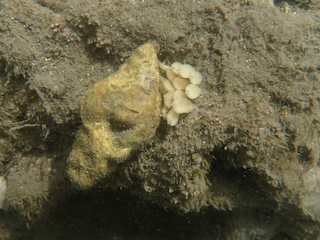
-
| 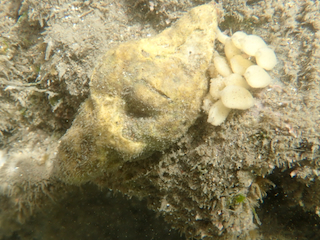
A muricid snail was laying eggs packaged in egg capsules. We did not want to disturb it but a likely identification
is a species that we observed to be very common, Pteropurpura festiva (see below). The egg capsules are quite similar to those that were photographed by Robyn J. Waayers for
two different species of Pteropurpura, including
P. festiva (Source 1). Cited web link: - 1
| 
Fish (perhaps sculpin) eggs were sticking to the underside of a tidepool rock.
|

Fish (perhaps sculpin) eggs.
| 
-
| 
-
|
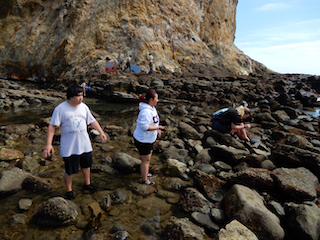
-
| 
These Stenoplax conspicua valves were found together in a tidepool. They are in good shape and
probably from the same animal, suggesting that something ate the chiton, leaving the valves behind to be further scavenged by hermit crabs.
| 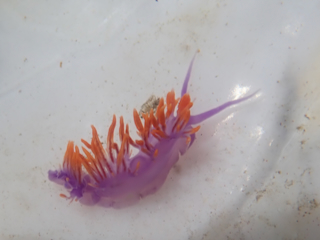
This is a juvenile Flabellinopsis iodinea (Spanish shawl nudibranch).
Jennifer Kennedy has written an interesting 2017 web article (Source 1) that summarizes what is known about its brilliant colors, that are attributed to its
feeding on a specific hydroid, Eudendrium ramosum, which possesses a pigment called astaxanthin. This pigment gives the Spanish shawl nudibranch its brilliant colors,
with the astaxanthin showing up in 3 different states: purple, orange and red. Cited web link: 1
|
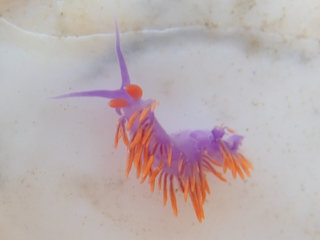
-
| 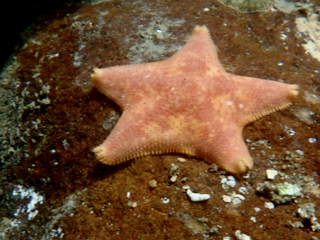
juvenile Patiria miniata (bat star)
| 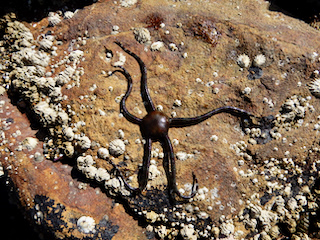
Ophioderma panamense (Panama brittle star)
|
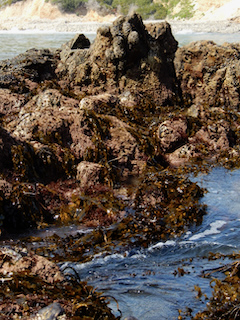
-
| 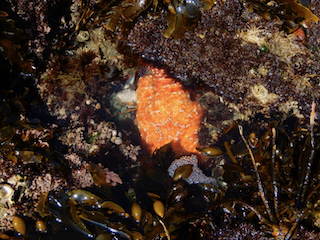
-
| 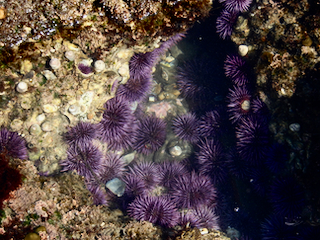
Strongylocentrotus purpuratus (purple urchins)
|
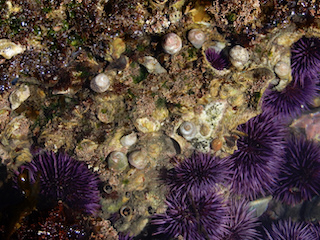
-
| 
Pisaster ochraceus (ochre seastar)
| 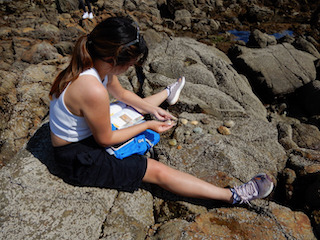
-
|
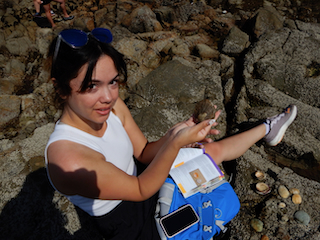
bivalve specialist
| 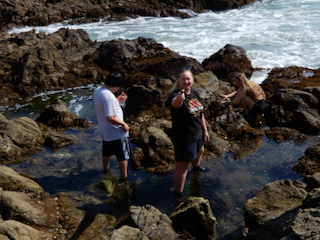
neogastropod specialist
| 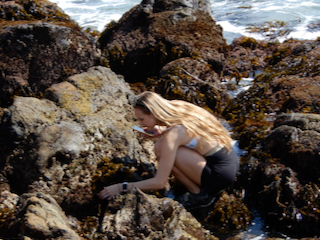
chiton specialist
|
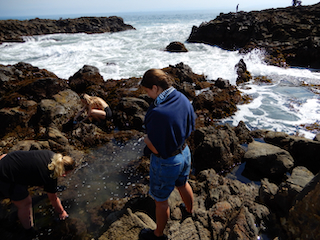
-
| 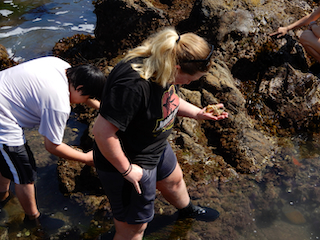
-
| 
patellogastropods (true limpets) specialist
|
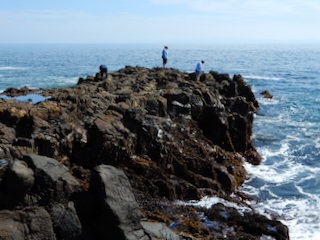
-
| 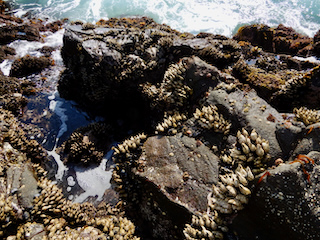
-
| 
-
|

-
| 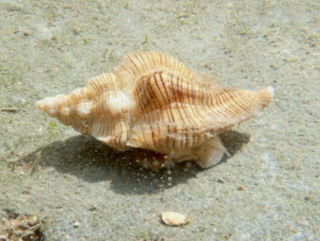
Pteropurpura festiva (festive murex)
| 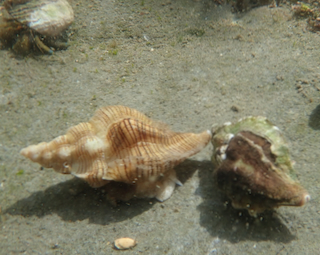
joined by a Ceratostoma nuttalli (Nuttall's hornmouth)
|
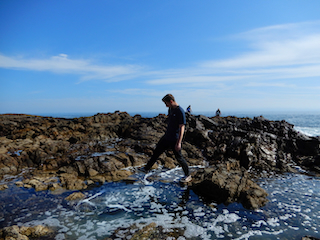
-
| 
-
| 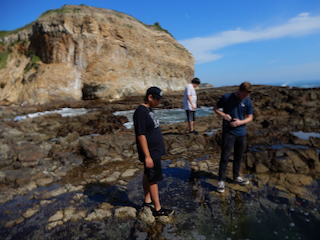
-
|
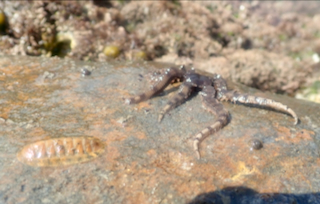
Lepidozona pectinulata (pectinulate chiton) and Ophiopteris papillosa
(flat-spined brittle star)
| 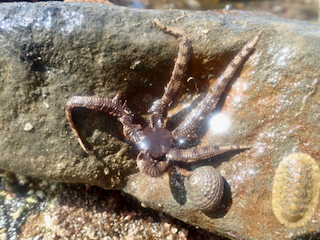
joined by a Tegula eiseni (western banded teguline snail)
| 
-
|
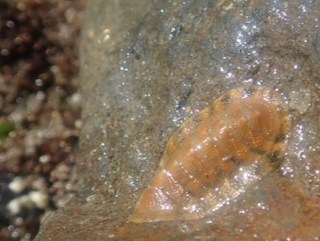
Lepidozona pectinulata
| 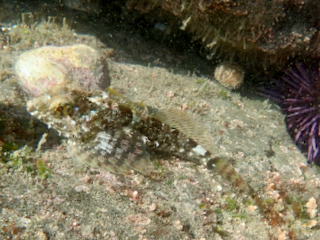
sculpin (not yet identified)
| 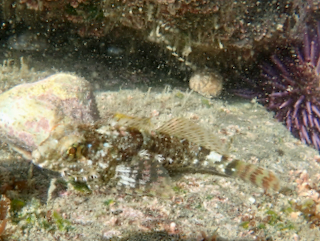
-
|
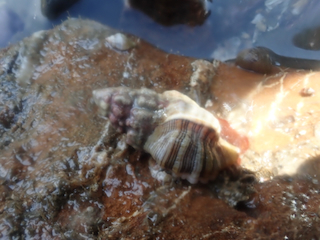
Roperia poulsoni (Poulson's rock snail) with the shell spire
by an encrusting bryozoan, Akatopora tincta, that commonly infests the shells of multiple neogastropod species in southern California.
| 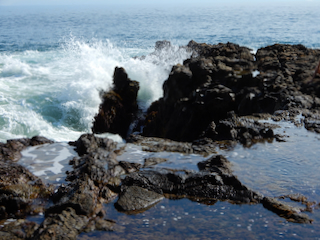
-
| 
-
|

-
| 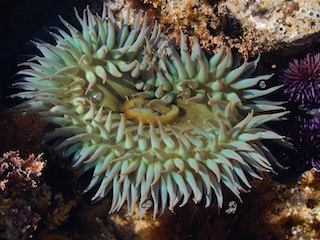
Anthopleura xanthogrammica (giant green anemone)
| 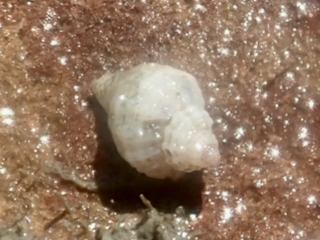
tiny juvenile belonging to the neogastropod family, Muricidae
|

-
| 
-
| 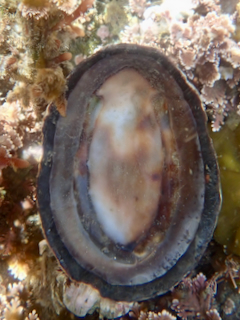
How Lottia gigantea gets its common name, the owl limpet.
|
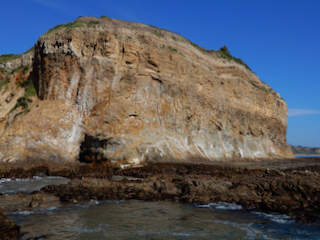
-
| 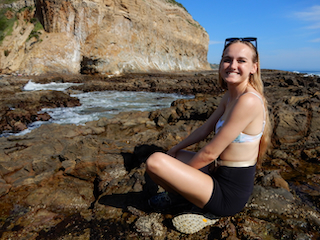
-
| 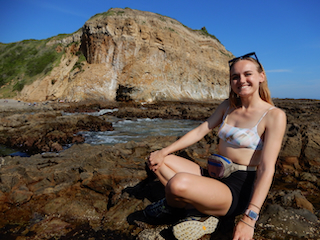
-
|
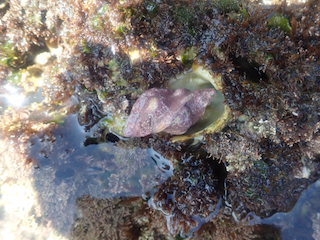
-
| 
-
| 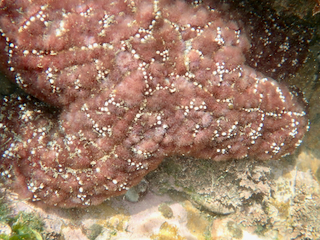
-
|
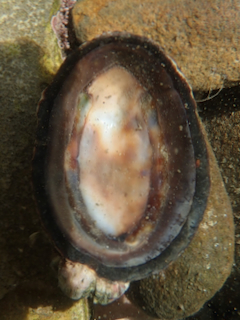
-
| 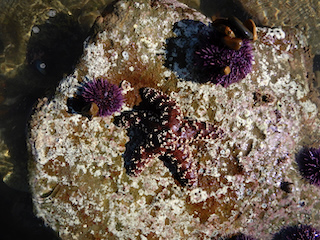
-
| 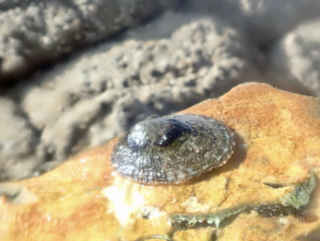
Lottia limatula (file limpet)
|
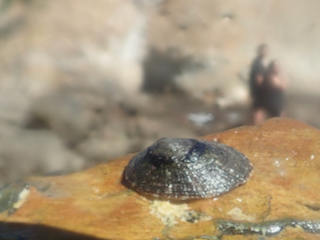
-
| 
-
| 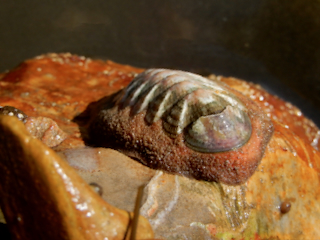
Stenoplax conspicua (conspicuous chiton)
|
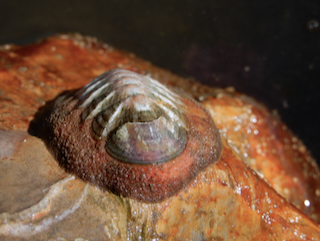
-
| 
-
| 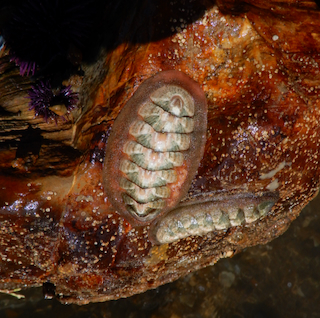
-
|
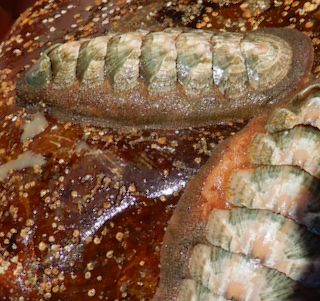
-
| 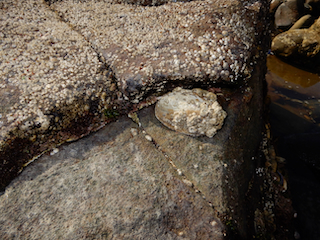
-
| 
Anthopleura sola (sunburst anemone)
|

Cyanoplax hartwegii (Hartweg's chiton)
| 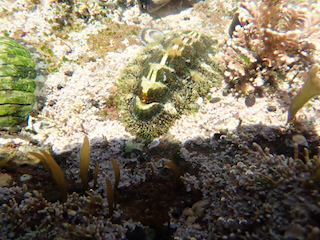
Nuttallina fluxa (southern spiny chiton)
| 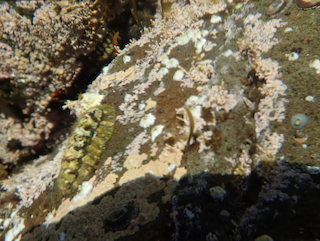
-
|
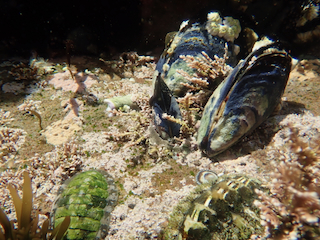
Mytilus californianus (California mussel)
| 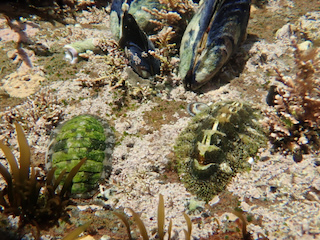
-
| 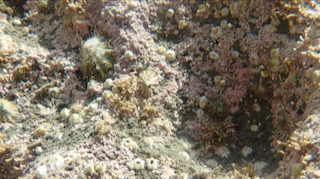
-
|

-
| 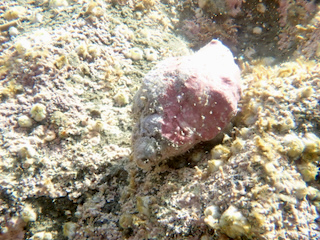
-
| 
Lottia conus
|

-
| 
-
| 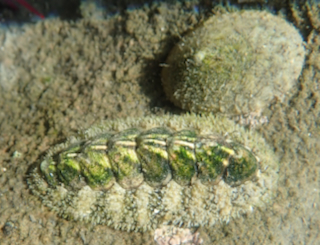
-
|
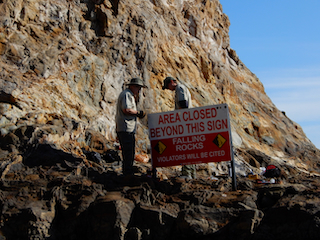
-
| 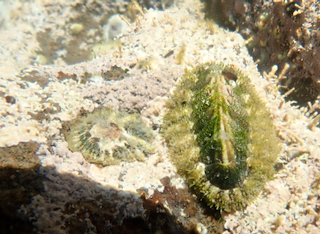
-
| 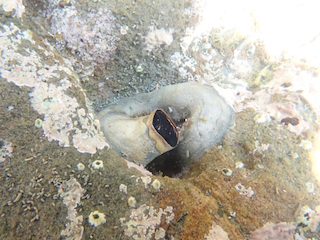
Thylacodes squamigerus (scaled worm snail)
|
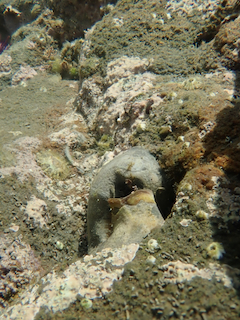
-
| 
-
| 
-
|
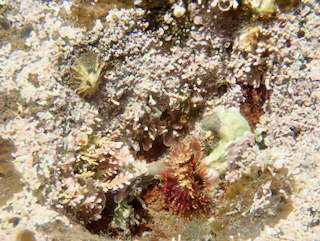
Serpula columbiana (a polychaete in the family, Serpulidae)
| 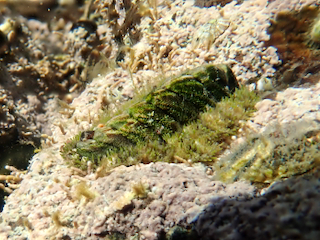
-
| 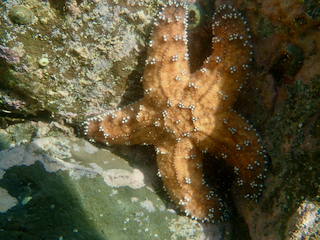
-
|
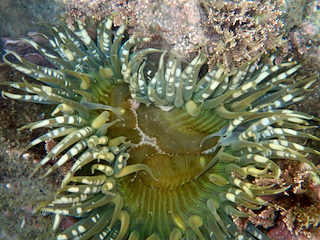
-
| 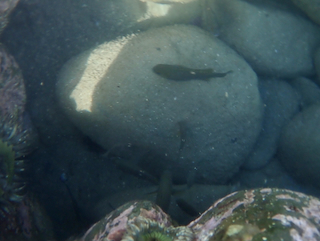
Girella nigricans (opaleye)
| 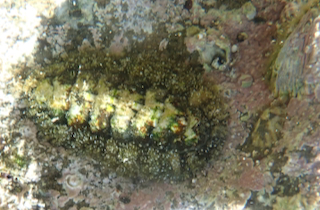
-
|

-
| 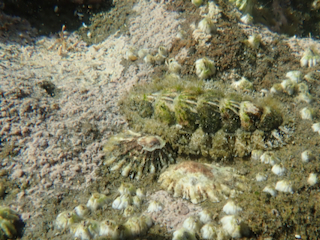
-
| 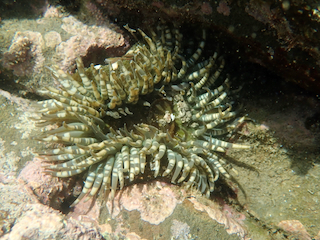
-
|
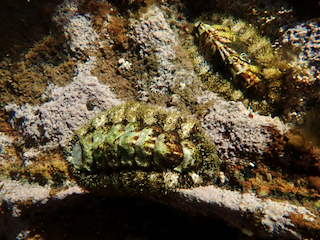
-
| 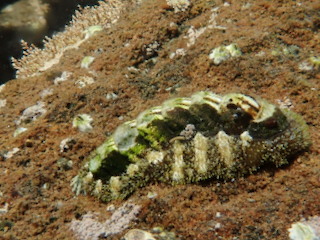
-
| 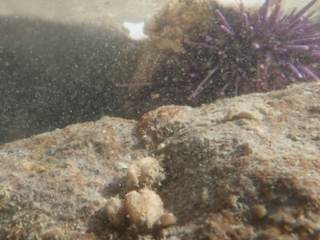
Acar bailyi (miniature ark clam) - see
recent trip
to Dana Point
|
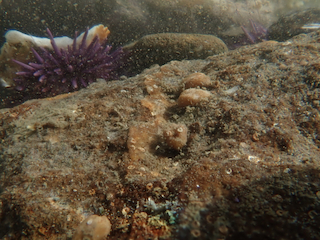
-
| 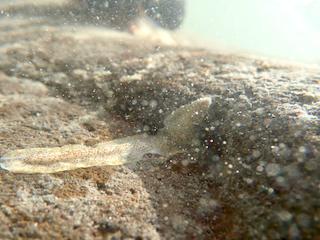
Enchiridium punctatum (we call it the dalmatian polyclad)
| 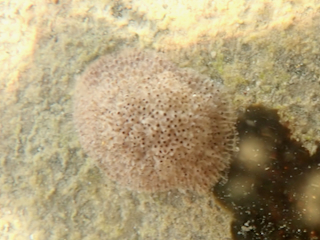
A bryozoan had overgrown a Crepipatella lingulata, which belongs to a suspension-feeding
family of caenogastropods, Calyptraeidae. The bryozoan is not identified but it looks somewhat similar to Akatopora tincta (see above).
|

-
| 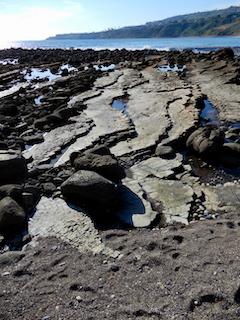
-
| 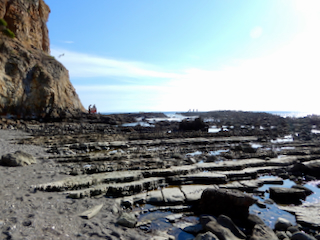
-
|
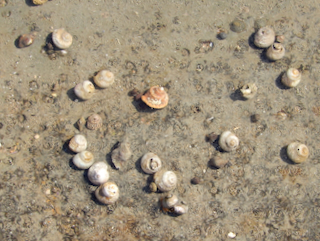
-
| 
-
| 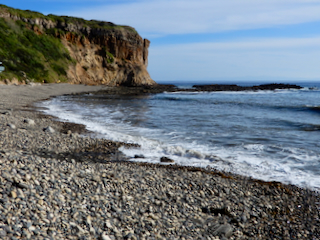
-
|
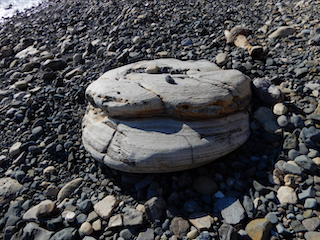
-
| 
-
| 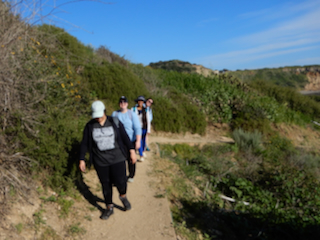
-
|
 Under Construction!
Under Construction! Under Construction!
Under Construction!